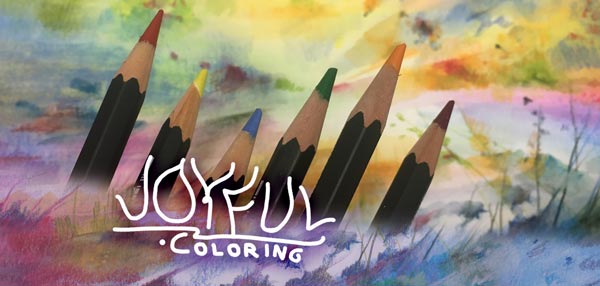Painting Seascapes – Making The Scenery Look Bigger
This week, we dive deeper into painting seascapes and other big sceneries. In spring, I thought my painting Atlantis was already finished, but after seeing the ship paintings in the Rijksmuseum in Amsterdam in May, I realized that I had made my seascape painting too simple and small-scale, and went back to working on it. Now it’s finished!
Painting a Bigger Sea
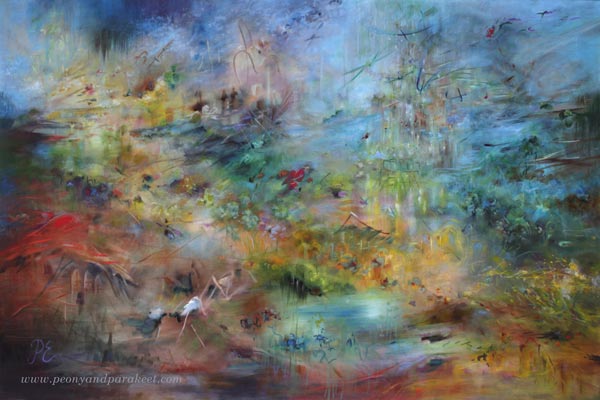
Despite the size of the canvas, you can make the seascape or any scenery look larger by adjusting the composition and the size of the brushstrokes. Compare the finished version with the one below!
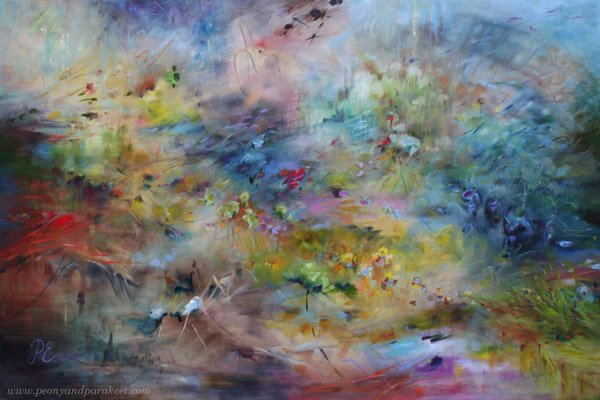
When you want to make a seascape look bigger, add tiny strokes, especially near the horizon, and adjust both left and right edges so that it looks like the seascape continues outside the painting.
The changes may look small when you look at the small photos, but in reality, they make a big difference. Here’s a close-up photo of before and after.
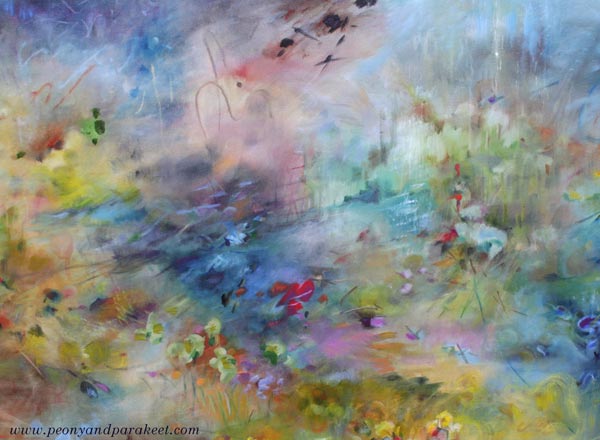
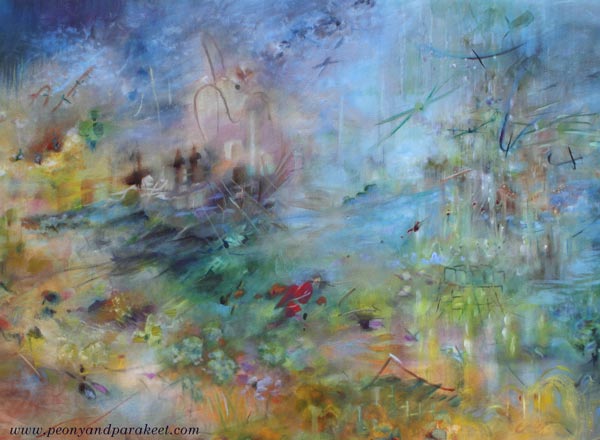
There are so many details that it was easier to make a short video instead of sharing more pics.
Seascapes don’t have to be boring and all blue. They can include all kinds of events and creatures, even buildings like in my painting.
A Series of Big Sceneries in Progress
It’s been a hot July in Finland, and my little studio is really warm in the afternoon. But I have big canvases in a queue, and the next one is already in progress.
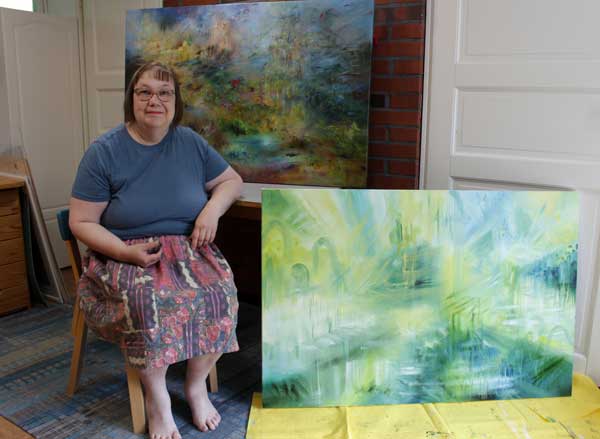
New Course Is Coming Up!
Painting seascapes and other sceneries is exciting, but as you know, I also love flowers. I will be running a new watercolor course called Wild Garden from 22nd September to 14th November. Here’s a small teaser pic …
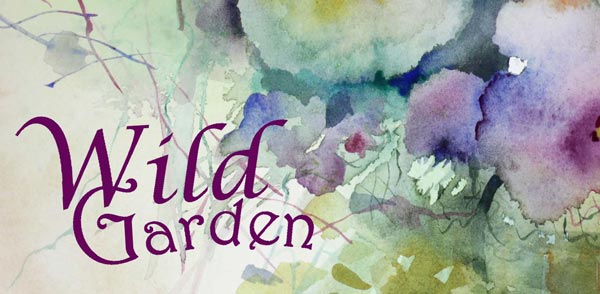
The early-bird sale of Wild Garden will start next week, so stay tuned!
How to Discover Yourself as an Artist
This week I share deep thoughts about how to discover yourself as an artist and how to get discovered. I have a video for you and also, some photos of making a recent large oil painting called “Atlantis”.

When I paint, I am an introvert, but after the session, I want to connect with the world.

When the painting is not finished, I may look at it with a very critical eye.

Then I think: Only if you knew what I think, how I feel, and how I have made myself to always reach higher.
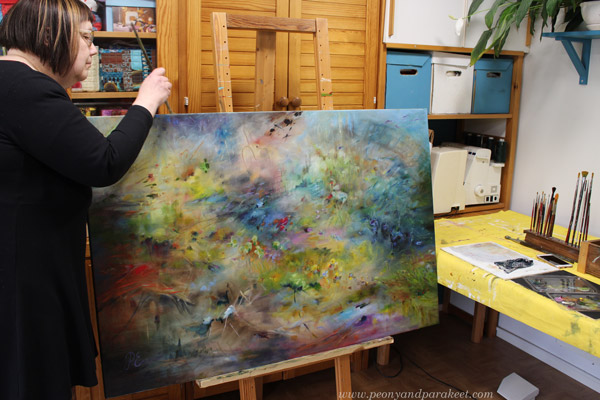
This week, I want to tell you. I want to share some things I have found helpful in my artistic career. How I have discovered my artistry and more: how I have got discovered as an artist.
How to Discover Yourself as an Artist and How to Get Discovered – Watch the Video!
I hope this was helpful. Tell us what you think!
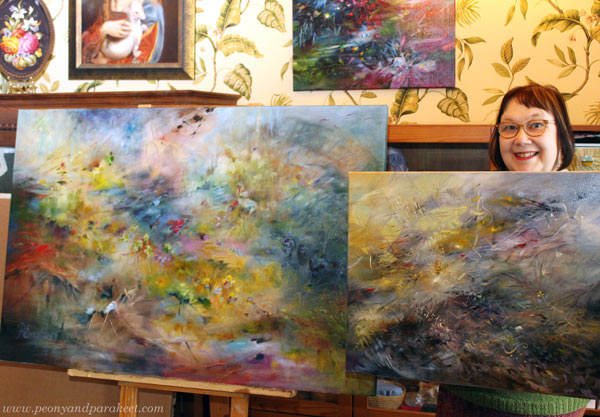
I am always waiting for your comments!
Weekly Art – Creating Regularly in Any Mood
This week, I talk about making weekly art and the feelings behind creating regularly.

I feel that although artists talk a lot about techniques and creative process, something gets left out. It’s a time perspective. I don’t mean how much time it takes to make one piece, but what it’s like to make art week after week. If you create art, you will surely recognize this: sometimes you feel excited, sometimes you don’t. People’s moods vary and you can’t always choose the best day.
Not the Ideal Mood
I felt nervous when I started doing this watercolor. The best part of the morning was already over and I was splashing color very fast. My weekly art session had a messy start.
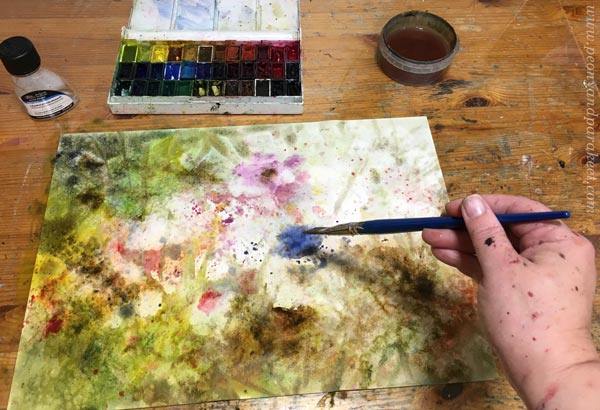
I found an unopened bottle of granulating medium in my stash and thought it might speed things up.

But I found the medium a useless acquisition. Some of the pigments are naturally spreadable and the spray bottle works better for them. All this took time, and my nervousness was still present and there was a new feeling too: self-doubt.
Not Feeling Confident
When you make art week after week, success is based on self-confidence more than mood. It’s easier to be confident at the beginning than later.

I usually paint with intuition and don’t use any models, so I often end up feeling hopeless. All I can say then is something like: “Keep going!” with a fake smile, and I don’t know if that helps at all.
Different Mood – Different Ideas
But art doesn’t put one mood above the other. Different mood brings different ideas. For example, if I am feeling nervous, there is an opportunity to be less conventional and express something that I would not otherwise come to mind.

The idea of this painting culminated in the Finnish expression “alavilla mailla hallanvaara.” It means “the danger of frost in the lowlands” in English, but the beauty of the statement is not in its content, but in how it sounds in Finnish. While painting, I began to think about those lowlands that suffer from rain and cold. Similarly, as painters paint week after week, flowers bloom constantly there, also in bad weather.

For me, in art, it’s not important in which mood it’s started, but that the end result contains both a trigger and a solution. Here, wind and rain bend the grass and break flower petals, but at the same time they make room for light.
Who Are You Creating Art For?
Within time, the mood evens out and focus is on the finishing. Then I also change who I think as a recipient.
I often start the weekly art by saying that “this piece is for me,” but when I finish I try to reach “for us.” There “we” includes all who like my art, both old and new friends in art. I don’t want to make art only “for you”, because then I lose myself while doing it, and not ” for them”, because it’s hopeless to hope that maybe someone would like the work even if we wouldn’t.

So, weekly, this happens again: the wrong moment, the wrong mood, the choice of brushes and colors, calming down, “I’m just doing it for myself”, uncertainty, slowly emerging ideas, concentration, triggers and solutions, happiness, and a feeling of gratitude that I can do this again for us.
Do you too create art regularly?
What to Create with Colored Pencils? – Watch the Video!
This week I have a short inspirational video for you. I wanted to make a video that I can share on Instagram, so this has different portions than my videos usually are. You can watch it bigger by pressing the last icon on the menubar below the video.
Most of these drawings are made with regular colored pencils (or crayons as some call them) and some with watercolor pencils. I love both.
Coloring Freely on Blank Paper – Simple Start!
I am an advocate for coloring freely – starting with blank paper, adding colors on top of each other, and getting excited about what comes up. This doesn’t have to be anything difficult. Here’s an old picture from 2015 that I still find inspiring. You can illustrate your journaling with freely colored boxes.
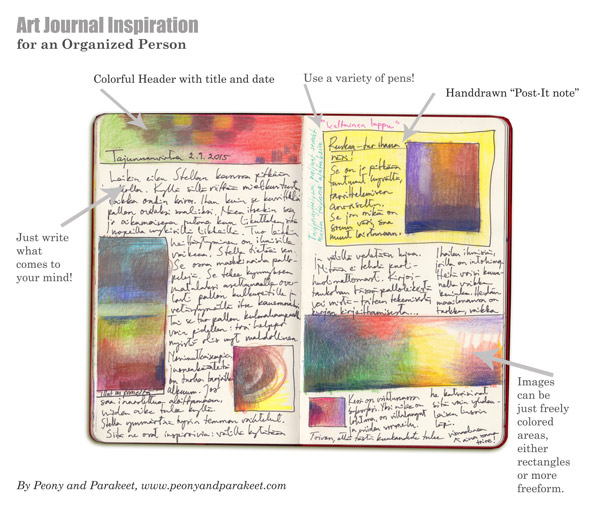
Children draw freely with colored pencils, but when they grow up and become “colored pencil artists” they need all kinds of references to get started. References are great for learning some techniques, but they don’t make anyone an artist. A big part of art is in our mind – how we open up and how we allow ourselves to break boundaries.
Growing Your Skills
My love for colored pencils is based on a promise that I have made for my inner child: I will color for you and help others to color for theirs. So even if I make oil paintings and media art too, colored pencils always have a special place in my heart.

So, welcome to my courses to improve your skills and expand your artistic thinking!
P.S. You can still sign up for Joyful Coloring!
